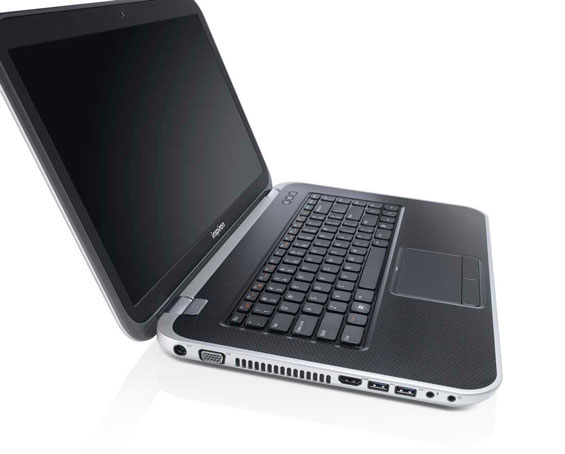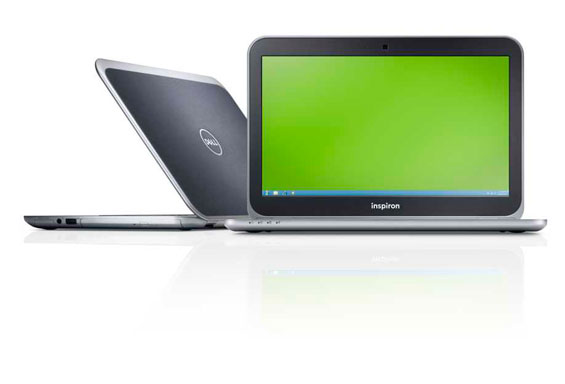True to Form, Dell Updates the Inspiron Line
by Dustin Sklavos on June 5, 2012 9:00 AM EST- Posted in
- Dell
- Ivy Bridge
- Inspiron
- Notebooks
While refresh season is generally a little underwhelming for press and end users alike (surprise surprise, vendors are using the newest generation of processors!), there can be diamonds in the rough. Dell's updated Precision lineup suggested a sleeping giant slowly waking up, but where the refreshed Inspirons are a bold move in form and Dell is clearly getting more aggressive again, the updates can seem underwhelming.
We're looking at three Inspiron lines, which in many ways seems to run contradictory to the simplified branding Dell was preaching about back when they launched the XPS 13 ultrabook. Complexity creep may be an issue that affects more than just game designers.
As far as the hardware itself goes, most of the systems are being updated to Ivy Bridge, although Dell did let slip that some of these are using the dual core, standard voltage Ivy Bridge processors that haven't been outed yet.

The Inspiron R series are the budgetest of the budget, available in 15.6" and 17.3" form factors with both regular and Special Edition versions. The difference? Special Edition systems use aluminum lids instead of glossy plastic, sport full 1080p displays (both 15.6" and 17.3"), offer dedicated graphics options (AMD Radeon HD 7730M with 2GB DDR3 in the R15 SE and NVIDIA GeForce GT 650M with 2GB GDDR5 in the R17 SE), and feature Skullcandy branded speakers instead of the usual. That's something worth investigating a little, because while HP has had their Beats Audio and Sony now has their comically named "LL Cool J Boomdizzle Bundle," Dell has typically produced the best sounding notebooks overall, at least subjectively. They may very well be playing branding catch up, but their sound quality has been pretty solid for some time now. The R17 SE will also be available with a 120Hz display using NVIDIA's 3D Vision 2 solution.
If you delete all the sexy details from the previous paragraph, you're left with the entry level Inspiron R series. No dedicated graphics, no backlit keyboards, bottom rung displays, no SSD caching. These aren't supposed to be exciting, though, they're for consumers on strict budgets. The proof is in the pricing: the 15R starts at $549 while its Special Edition jumps up to $899; the 17R starts at $599 while its Special Edition jumps all the way up to $1,099.

Where Dell seems to be getting more in the swing of things is with the Inspiron 13z and 14z. These are a little too thick to be called ultrabooks but they're still under an inch thick and both are in the neighborhood of about four pounds. Displays remain underwhelming at 1366x768, but starting at $599 the 13z could be a solid ultraportable alternative to more expensive ultrabooks. The 14z is more compelling: Dell offers both an mSATA SSD caching option and a dedicated graphics option in the form of the AMD Radeon HD 7570M with 1GB of GDDR5. Both notebooks appear to be running low voltage but not ultra low voltage Ivy Bridge processors though they start with Sandy Bridge ULV chips. The 14z starts at $699, and may actually be one of the better options Dell makes available.
Availability for all of these notebooks is set for June 19th.










13 Comments
View All Comments
retrospooty - Tuesday, June 5, 2012 - link
"The Inspiron R series are the budgetest of the budget, available in 15.6" and 17.3" form factors with both regular and Special Edition versions. The difference? Special Edition systems use aluminum lids instead of glossy plastic, sport full 1080p displays (both 15.6" and 17.3"), "I am soooo glad to see even the lowest of the low end cheap machines are starting to have high res screens , at least as an option.
Rand - Tuesday, June 5, 2012 - link
I wouldn't call a $900 and $1100 starting price the lowest of the low end, that's still well over the typical laptop selling price.retrospooty - Tuesday, June 5, 2012 - link
The artivle above has them starting at $549...Which is right about the normal for Dell. You can actually get them for $400 to $450 if you browse th3e online deal sites. a screen upgrade in generally $50 to 100 more.kyuu - Tuesday, June 5, 2012 - link
The 1080p screens are included with the Special Edition models, which start at $900 and $1100. The base models have the same crap 1366x768 screens as always.retrospooty - Tuesday, June 5, 2012 - link
Maybe not... It doesnt specifically say that the upgrade option isnt available to the low end. Typically $50-$100 will get the 1080p upgrade. If the LCD already exists for the same model on the high end, it may be available on the low as well. That is the way it always used to be done up until the past few years when 1366x768 was the only option.tayb - Tuesday, June 5, 2012 - link
You can't upgrade the $499 model to the 1080p display. That's just how they roll.retrospooty - Tuesday, June 5, 2012 - link
If that turns out to be the case, then defintely pass. I'd rather get a freegin 5 inch galaxy note with higher res than that.lowlymarine - Tuesday, June 5, 2012 - link
Well now technically the Galaxy Note still has a lower resolution than these notebooks:1366*768 = 1049088
1280*800 = 1024000
Unless you simply meant pixel density, in which case good luck finding a notebook that does beat your typical smartphone.
mfenn - Tuesday, June 5, 2012 - link
"Complexity creep may be an issue that affects more than just game designers."Been reading a little MaRo, eh Dustin?
Yuniverse - Tuesday, June 5, 2012 - link
I still wouldn't touch dell. It's been ages since i recommended dells to my customers and they're still awful.